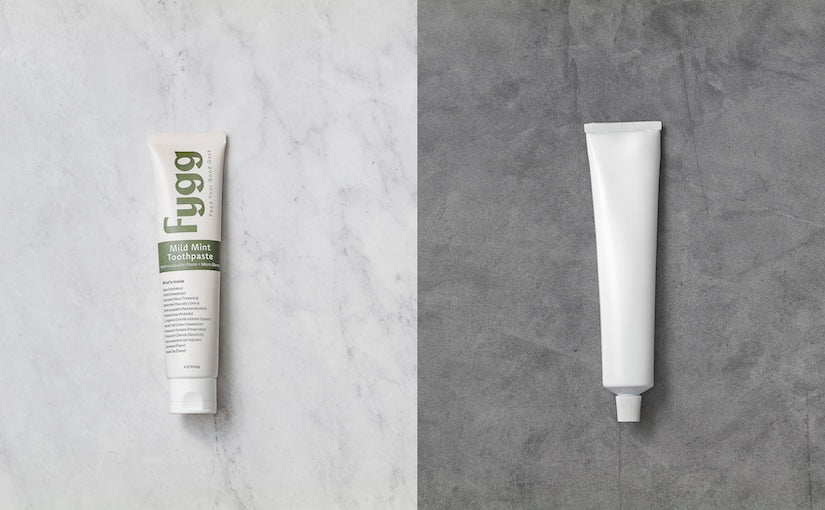
Let’s set the record straight about nano-hydroxyapatite (nHA) in toothpaste. While some brands claim that a 10% concentration is crucial for remineralizing teeth, this is simply not true. This misunderstanding often arises from misinterpreted studies that do not reflect real-world toothpaste effectiveness.
Research shows that the ideal concentration of nHA is actually much lower, especially when using a type called NanoXIM, made in Europe and approved by the SCCS. NanoXIM, sold at 15.5% in solution, has been shown to be most effective at a concentration of 1-3% for safety, sensitivity, remineralization, and whitening.
What is Nano-Hydroxyapatite?
Nano hydroxyapatite is derived from calcium phosphate, a naturally occurring organic material. Its biocompatibility makes it useful in medicine for stimulating bone growth and strengthening enamel. In dentistry, nHA is renowned for its ability to remineralize teeth, making it a key ingredient in toothpaste.
How Does Nano-Hydroxyapatite Work?
nHA works by mimicking the minerals found in your teeth, filling in the enamel with calcium and phosphate. This process counteracts the daily wear from acids and sugars that erode enamel and lead to cavities. Using nHA toothpaste helps reinforce enamel and improve oral health.
Effectiveness of NanoXIM: 1-3% is Optimal
NanoXIM, produced by Fluidinova in Europe, is renowned for its optimal concentration and safety. Studies indicate that a 1-3% concentration of NanoXIM provides excellent remineralization, sensitivity reduction, and whitening effects.
Why NanoXIM is the Best Choice
NanoXIM is a type of nano hydroxyapatite produced by Fluidinova in Europe and is the only one approved by the SCCS for consumer safety. Unlike other forms, NanoXIM is highly effective at lower concentrations. Studies indicate that a 1-3% concentration of NanoXIM is optimal, providing all the benefits of remineralization, sensitivity reduction, and whitening without the aggregation issues seen at higher concentrations.
The Misconception of 10% Nano-Hydroxyapatite
Claims that 10% nHA is necessary often stem from flawed studies using micro particles instead of nano particles, or from outdated definitions of what constitutes a nano particle. For example, the frequently cited Huang et al. (2009) study used particles sized 500-2000 nm, which are considered micro particles by today’s standards. Such mischaracterizations lead to incorrect conclusions about the necessary concentration of nHA.
Choosing the Right Toothpaste
When selecting a toothpaste, ensure it uses high-quality, rod-shaped nHA particles like NanoXIM. Ask your manufacturer if their nHA source is rod-shaped with a form factor ratio of 3:1 and is not at a concentration above 10% in the final product. Also, ensure that the particles are not modified or surface-coated.
Why Fygg is the Best Choice
Fygg toothpaste is formulated with 15.5% NanoXIM, resulting in a 3.1% concentration per tube. This is within the optimal range for effectiveness, ensuring that you get the best benefits for remineralization, sensitivity reduction, and whitening.
The Bottom Line
You do not need 10% nano hydroxyapatite in your toothpaste. Instead, focus on the quality and type of nHA. With NanoXIM, a 1-3% concentration is all you need for optimal oral health. Fygg’s commitment to using high-quality NanoXIM ensures you get the best results.
Frequently Asked Questions
What is the best form of hydroxyapatite? Rod-shaped nano hydroxyapatite is the best form. Studies show that at a 1-3% concentration, this type effectively remineralizes enamel, strengthens teeth, and soothes hypersensitivity.
What percentage of nano-hydroxyapatite is in toothpaste? Fygg Toothpaste contains 3.1% NanoXIM, which is optimal for enamel remineralization and tooth strengthening.
Do dentists recommend hydroxyapatite? Yes, dentists recommend hydroxyapatite. Fygg’s toothpaste, formulated with 3.1% NanoXIM by Fluidinova, provides a superior alternative for those seeking fluoride-free options.
Which nano-hydroxyapatite toothpaste is best? At Fygg, we highly recommend choosing a brand of toothpaste that is formulated with NanoXIM, as it is the only type of hydroxyapatite approved by the SCCS for safety in the mouth and rest of the body, as well as efficacy.
Does nano-hydroxyapatite toothpaste really work? Absolutely. Studies confirm that nano hydroxyapatite toothpaste is just as effective as fluoride in protecting teeth, soothing hypersensitivity, preventing tooth decay, and even whitening.
